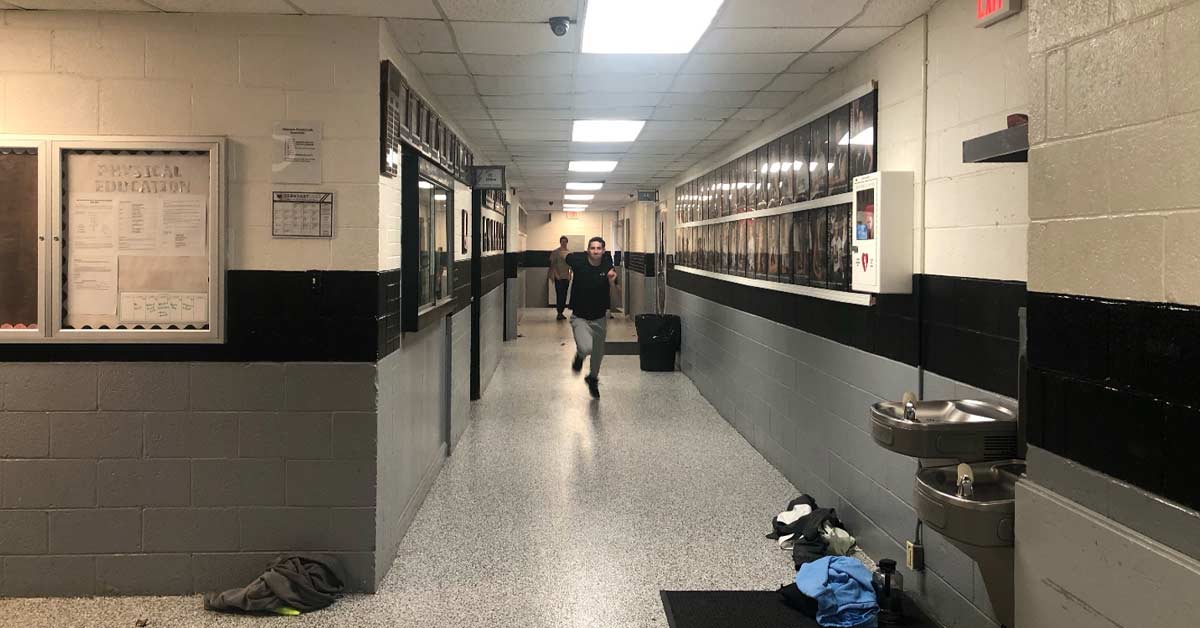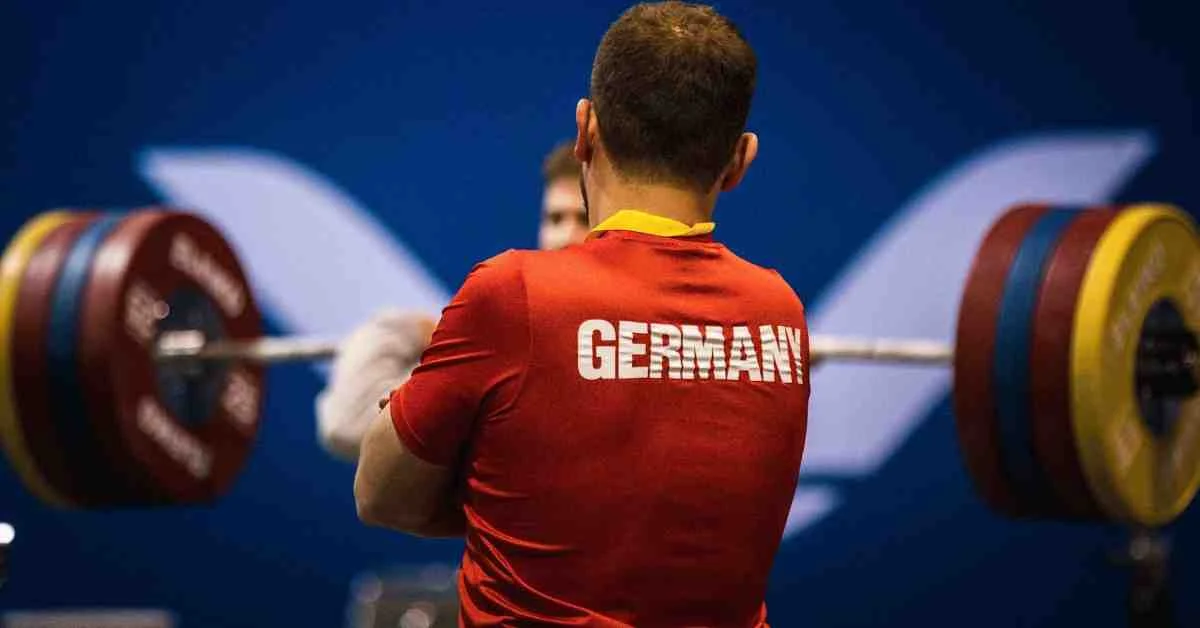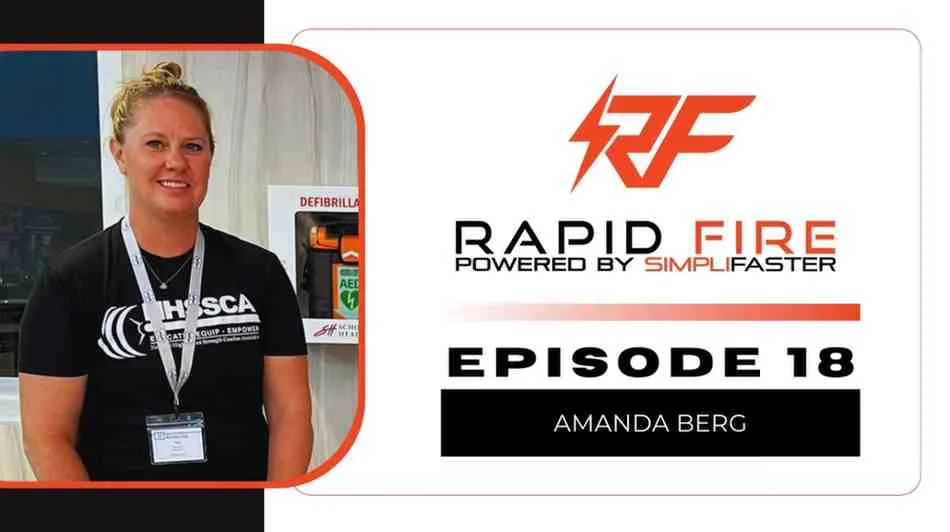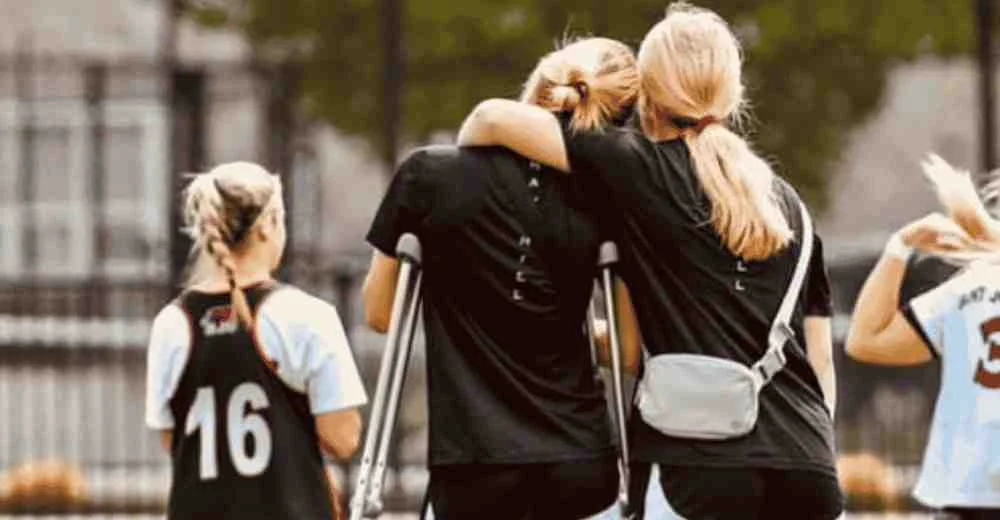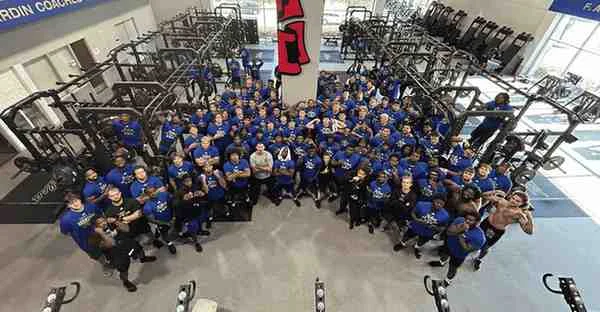Raise your hand if you compete in indoor track but have no indoor track to practice on.
This has been a constant battle for most schools throughout the Northern United States for as long as indoor track has been around. How does a coach get their athletes ready for a season without a facility that they will actually compete in?
We get outside as much as we possibly can—usually, 40 degrees is our threshold—but we also have to factor in wind chill, precipitation, and snow cover. When being outside is not realistic, we improvise and utilize what we do have. We have no pits inside, no easily accessible place for run-throughs on hurdles, and nowhere to wear spikes…yet schools like ours, Salt Fork, find a way.
Having a successful indoor track team that can throw down some big marks in February and March while also preparing for the outdoor season isn’t as difficult as you might think if you can:
- Be creative.
- Communicate.
- Be flexible.
- Focus on the fundamentals.
1. Be Creative
At Salt Fork, it is imperative to get creative with space during the winter or when the weather doesn’t cooperate in the spring. When the track isn’t accessible, we must turn our attention inside. The first spot to look is our high school gym—but that idea tends to get quashed quickly because of basketball season, as it’s very rare to find a time when either the boys’ or girls’ team is not on the gym floor right after school.
The second spot we look is to our elementary school gym, which is across the parking lot. We typically have access to it for about 15–20 minutes to get RPR and speed drills in before the cheerleaders come in for their practice at 3:30 p.m. After that, we move to the elementary hallway, which covers about 60 meters from wall to door. This is our MOST important space during the winter. The hallway allows us to accomplish every sprint that we cover in our speed cycle (40m, 10-yard fly, 20-yard fly, etc.).
Using the hallway allows us to accomplish every sprint that we cover in our speed cycle. It also enables us to complete lactic workouts, if necessary, once we’re in season, says @SFStormTrack. Share on XThis hallway also enables us to complete lactic workouts, if necessary, once we are in season. We have two go-to lactics for this hallway:
- One is 10x40m with a 10-meter run-in and a one-minute rest between reps.
- The second is a 30-second shuttle drill (our indoor version of the 23-second drill).
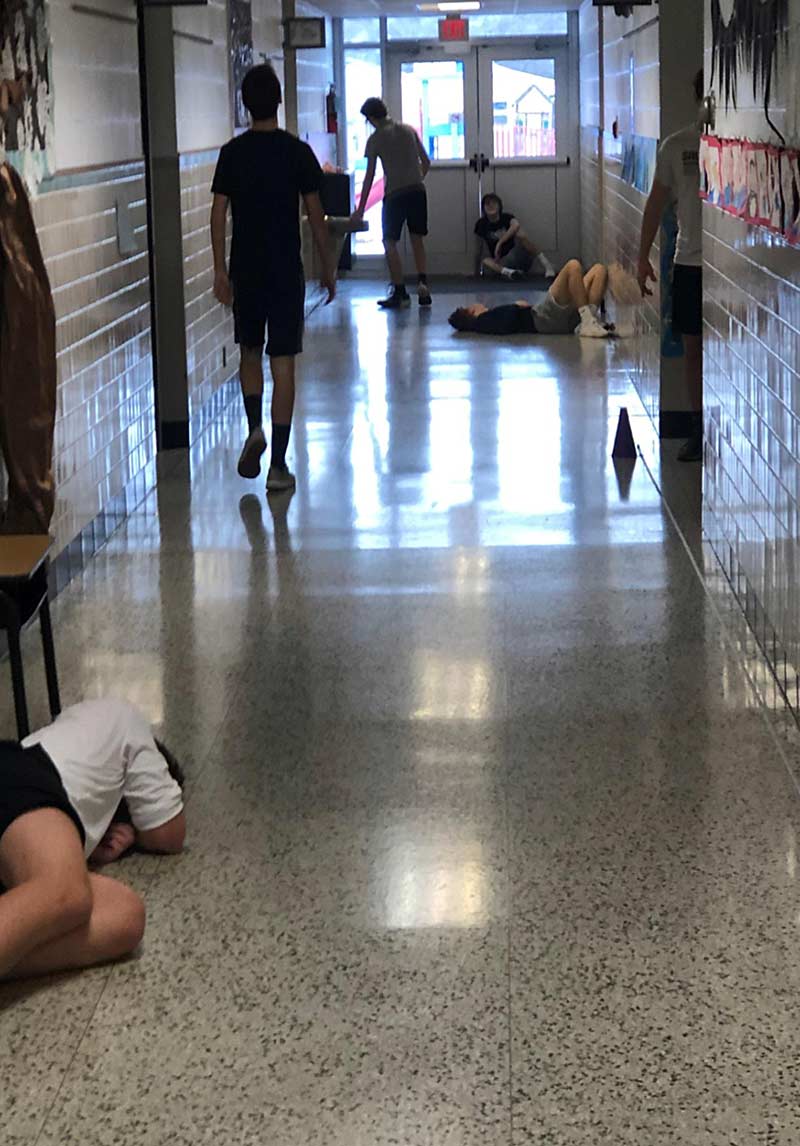
We set up cones at the start line, and the runner sprints 50 meters down the hall, turns, heads back up the hall to the 100m mark, and so on. Very similar to how we do it outside, we set up cones for the 23-second drill at the 165m mark and up every 5 meters to 200 meters. With all the turns and reduced traction, we’ve found that our top runners can hit around 200m at 30 seconds—which is the goal outside in 23 seconds.
We utilize our Freelap system for every sprint we do inside (outside of the shuttle). Many people may think that our athletes will suffer from shin splints by running inside on a tile floor in tennis shoes—we do everything we can to reduce the chance of that happening. We cut reps if necessary, focus on walking on our heels and toes while barefoot, and do our ABCs and wipers with our ankles. All of these methods have helped us immensely in the winter months to reduce the likelihood of shin splints occurring.
2. Communicate
It is important to communicate with fellow teachers, administrators, and coaches so that we’re all on the same page. It is necessary to reach out to get the space we need. At the beginning of the winter, I make sure to reach out to the elementary school principal to relay our schedule to use the hallway in that building. We clearly have a lot of patient elementary teachers who have put up with us for years now.
Many teachers are still in their classrooms finishing up for the day, often with their own children, and we work together to make sure that no one gets run over by a sprinter barreling down the hallway at 22 mph. We even get the occasional elementary student who wants to hop in and sprint as well! It is also beneficial to check out the boys’ and girls’ basketball schedules to determine when there are off days, and we can use the H.S. gym for warm-ups or fundamentals.
3. Be Flexible
Another pillar of indoor training is flexibility. At times, we have to call many audibles on what we want to do because of spacing issues. I can’t even count how many times I have planned a workout and discovered that it wouldn’t work with the space we had for the day.
As mentioned, we typically rely on the elementary hallway to get our sprinting done, but sometimes it has tables full of projects up. We may have to move to a shorter hallway and shorten our sprints but raise the reps, if necessary. For instance, instead of doing 3×40 yards, we may have to pivot to 5–6×20 yards. The focus on acceleration becomes more of a point of emphasis with this change.
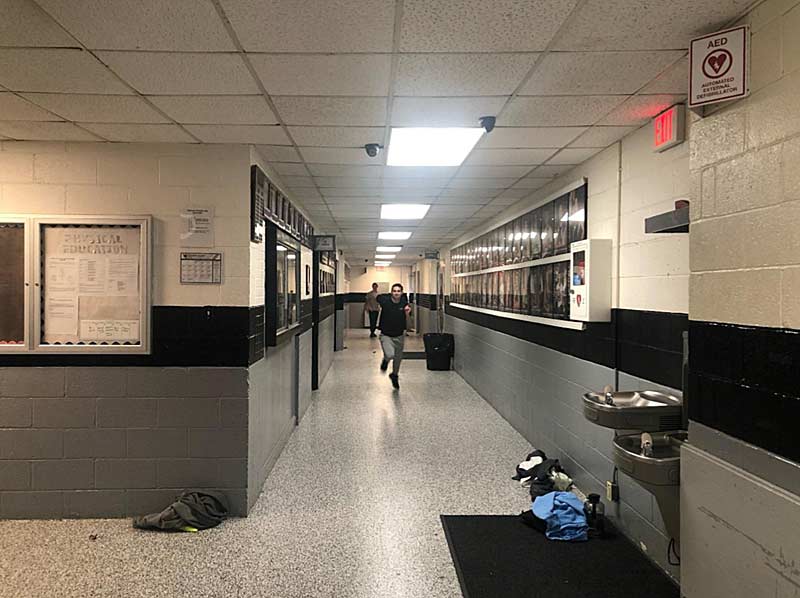
This season, the girls’ basketball team has used the weight room for their pre-game meeting before they head out for away games. We share the space and make it work. They use the front with the TV monitor to watch film, while we use the back half to finish our workout with jumpers doing “run run jumps” or sprinters finishing with isos, for example. We have a new gym floor that we can’t put the hurdles on, so we use the hallway outside of the gym. It isn’t spacious or glamorous, but it gets the job done.
It’s not spacious or glamorous, but using the hallway for the hurdles gets the job done, says @SFStormTrack. Share on XWe often have to be patient with kids or custodians or teachers walking down the long hallway we run in—we wait, because we are the guests. It’s important to think about programming for the day as well. For our technical events—hurdles, jumps, and throws—we have to be very flexible in utilizing the space we have.
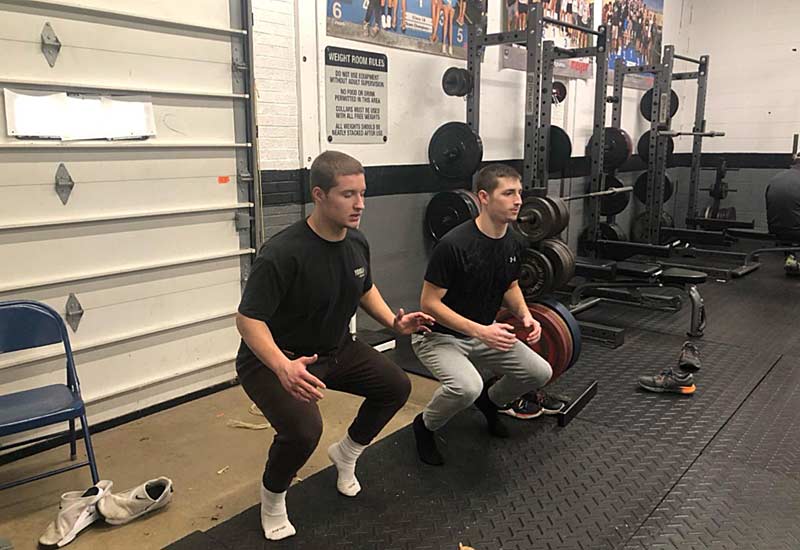
4. Focus on the Fundamentals
Maybe one of the most beneficial aspects of limited space and being forced indoors is the opportunity to put a concerted focus on the fundamentals. We spend a lot of time working on the little things indoors.
Tony Holler’s “boom-booms” become a go-to in various forms. We typically start on the wall, utilizing just the bottom half of our bodies, working on shin angles and getting knees high. We then advance to loaded boom-booms, getting shins in proper angles with the drive leg moving backward and then quickly back up, finishing with a “boom, boom, boom.” Next, we move to stationary boom-booms off the wall, where we now utilize the arms but still stay in place.
Finally, we advance to walking boom-booms, switching three times, holding the knee on the third, and then going again. We do this for about 10 meters. We also spend time, especially with the younger athletes, working just on arms and ensuring they get them into a proper position as they sprint.
We don’t have the ability to utilize blocks inside, so we find other ways to work on acceleration and getting our bodies in a proper position. We work on accelerations from a lying position on the belly, from a kneeling position, and from a single-leg loaded position.
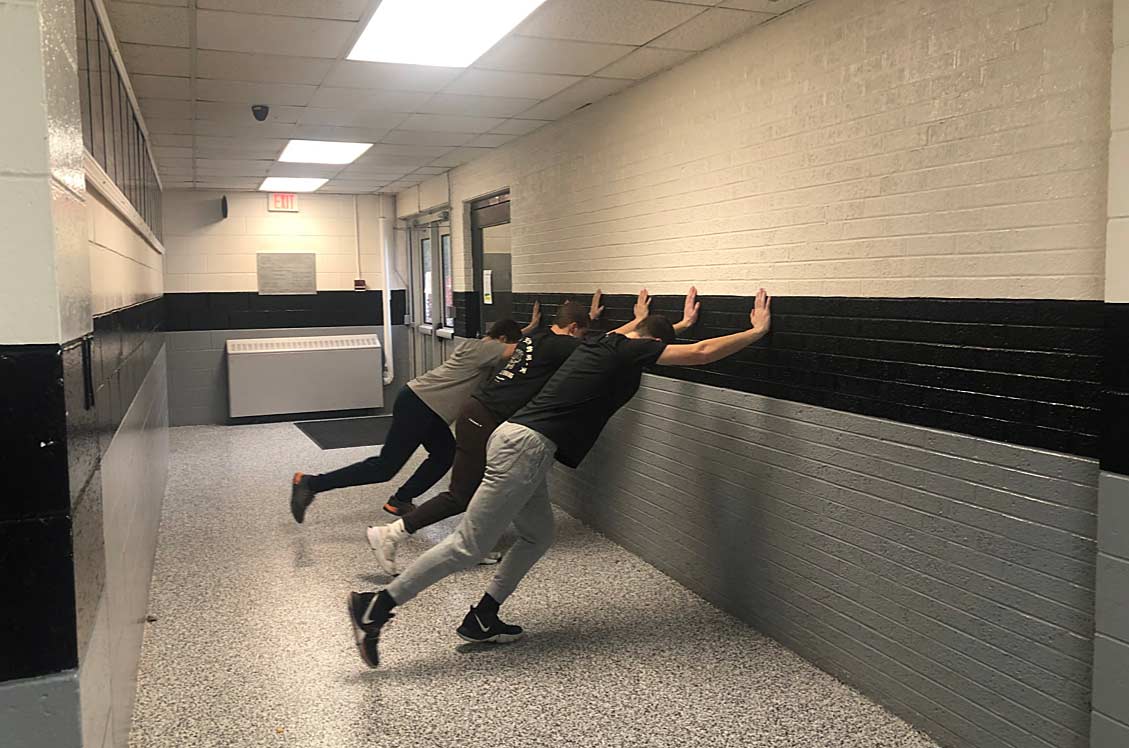
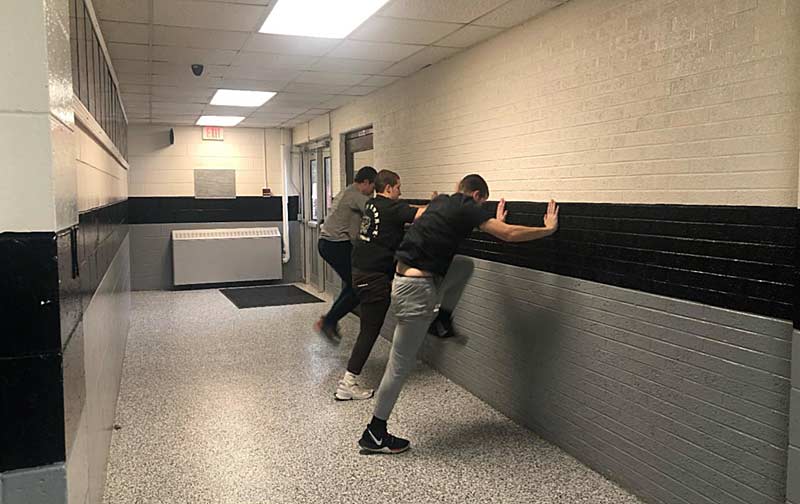
Hurdlers, as I have mentioned earlier, don’t have the ability to use the gym floor anymore. Instead, we utilize the hallway just outside the gym and focus on the basics since there isn’t room to work on getting over hurdles at normal speed. We do lead leg and trail leg drills, we work on improving the cut step, and we walk, skip, and jog over hurdles at reduced heights and distances. We spend time working on the proper arm position and how to move them through the hurdle process. We focus on the positions of the feet, knees, hips, and chest. Working on these basics has set our hurdlers up for success when we can actually get outside.
One of the most beneficial aspects of limited space and being forced indoors may be the opportunity to focus on the fundamentals. We spend a lot of time working on the little things indoors. Share on X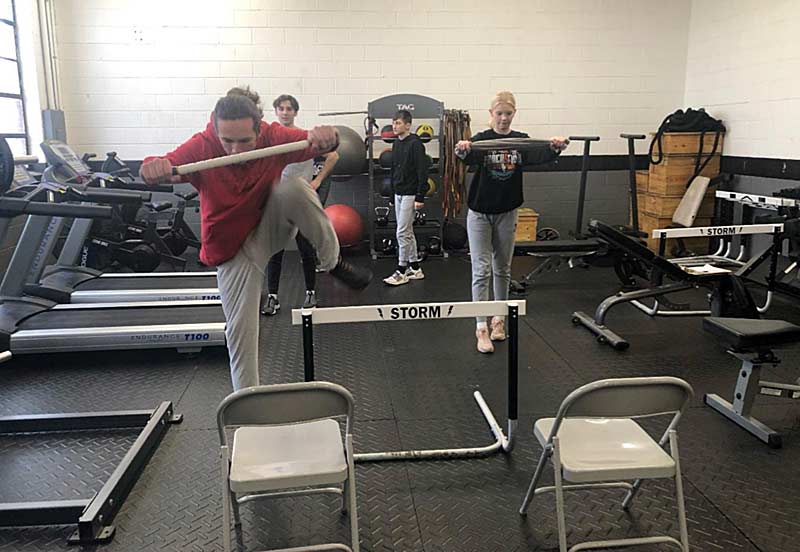
Our jumpers typically do their work in the weight room. We are currently two weeks into our season, and we haven’t had any jumpers actually jump into a sand pit, yet. Jumpers get their work in two times a week on our X-factor days. We spend about 20–30 minutes each day working on the basics. We isolate each phase of the triple jump and work on it individually.
Again, much like the hurdlers, we continue to ensure they get their arms, knees, hips, chest, and feet in the correct position to maximize their jump. We do chair drills that replicate the landing phase of each jump. Our first meet is in a week, and it looks like we will have an opportunity to finally get steps in beforehand with a 50-degree day on tap.
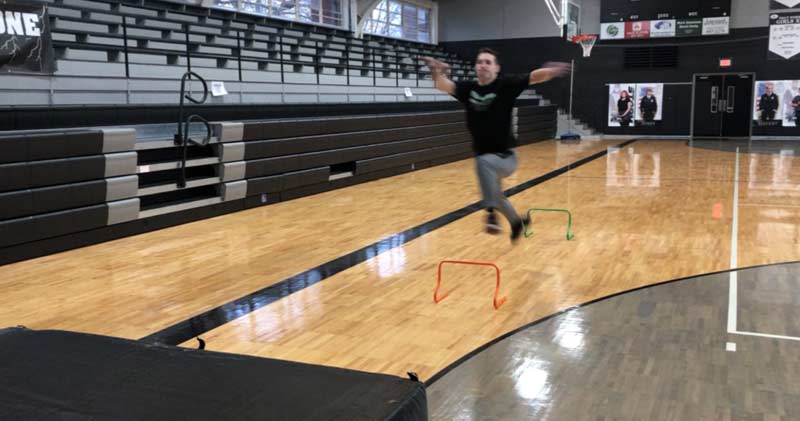
Luckily for our throwers, the elementary gym floor is conducive to throwing indoor shot. They have the opportunity to work on throwing with an indoor ring that has been built, although this only occurs once the cheerleaders have finished their competition season. Prior to that, they spend time in the weight room getting stronger and working on their form.
Sample Week of Indoor Training
Monday
Weight room: Foam roll, ankle mobility, golf ball rollout
Elem gym: RPR and speed drills
Elem hallway or gym: Work on arm movement during sprints, wall boom-booms
Elem hallway: 10-yd flys x 4 – 170–200 yards total, 5 min rest – Freelap, 1–2 handoffs 4×4
Weight room: Ankle isos, lift if not in advanced PE
Hurdles: Take hurdles to gym hallway, fence (wall) drills – four-count trail leg and two-count trail leg, window drill 2x each
Tuesday
Weight room: Foam roll, ankle mobility, golf ball rollout, RPR
Gym hallway: Shortened speed drills
Weight room: Broad jump, measure, 3x
Gym hallway: Varied accels – from prone position 2x, from a kneeling position 2x, loaded leg 2x (cut down to one if needed)
Weight room: Skater bounds variations, lunge isos, lift if not in advanced PE
Jumpers: Stay in weight room, mini hurdle gallops – run, run, jump 3×6
Wednesday
Weight room: Foam roll, ankle mobility, golf ball rollout
H.S. gym: RPR, speed drills, wall boom-booms, and loaded boom-booms
Elem hallway: 20m fly with 10m entry x 3–5 reps for 150m total, 4–5 minutes rest, Freelap
Weight room: Ankle isos, lift if not in advanced PE
Hurdles: Take hurdles to gym hallway, fence (wall drills) – stationary lead leg, 1H (2×10 both legs), bent knee jogging over 4H – 2x each leg, 30” or wickets for new hurdlers
Thursday
Weight room: Foam roll, ankle mobility, golf ball rollout
Elem gym: RPR, speed drills, med ball throws – underhand (2×6), push accel (2×6) 5–10m each
Elem hallway: 4×2 handoffs – 1–2 times
Weight room: 2×8 each leg – single-leg plyo, mobility circuit with bands, hurdle mobility circuit, lift if needed
Jumpers: Focus on phase 1 TJ – seated chair landing drills
Friday
Weight room: Foam roll, ankle mobility, golf ball rollout—mentally get ready!
Elem gym: RPR, speed drills
Elem hallway: 10x40m w/10m run-in, 500m total, 1-minute rest, Freelap
Conclusion
Each school and team will have different challenges to deal with when it comes to indoor track if they don’t have a fieldhouse or facility of their own. In my experience, it just takes a little ingenuity to figure out how to best tackle the situation. We are a small school with a lot of athletes still participating in winter sports, so our numbers are limited until those are over, which makes it easier to make the space work.
Larger schools may need to stagger times or set up stations to best accommodate their athletes. I believe that the hidden benefit is the increased focus on fundamentals for all athletes—even veterans who have been around for four years. As a coach, if you can be creative, communicate effectively, be flexible, and focus on the basics, you can get plenty accomplished inside with limited space during the winter and spring when necessary.
[freelap-share]

